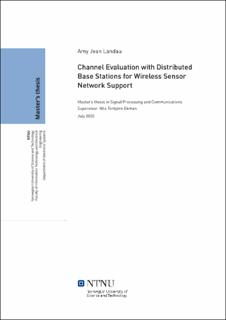| dc.description.abstract | This paper compares the quality of a channel within a rectangular space given the variables: number of base stations, number of antenna elements, base station locations, and richness of scattering in the environment. Increasing and distributing the number of base stations results in less loss due to distance from the transmitter, while increasing the number of antenna elements within the base station decreases
the amount of small scale fading in the channel. When the decrease in loss between the two base stations is compared, the corner oriented station provides a less lossy
channel than the sidewall oriented station. As the richness of the environment increases, the difference in quality between sidewall and corner base stations decreases. The final results show that distributed base stations and increasing numbers of antenna elements will provide fewer losses due to distance and interference, but the location difference between sidewall and corner is close to negligible when it comes to the recommendation of the best location for these base stations with a
rich scattering environment. Increasing the number of antenna elements in a base 2 scheme will decrease the fading seen by 3dB. | |
